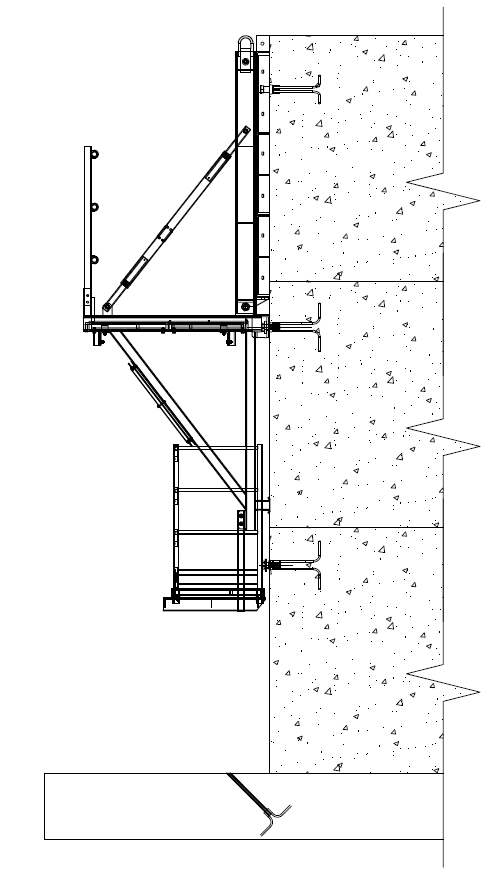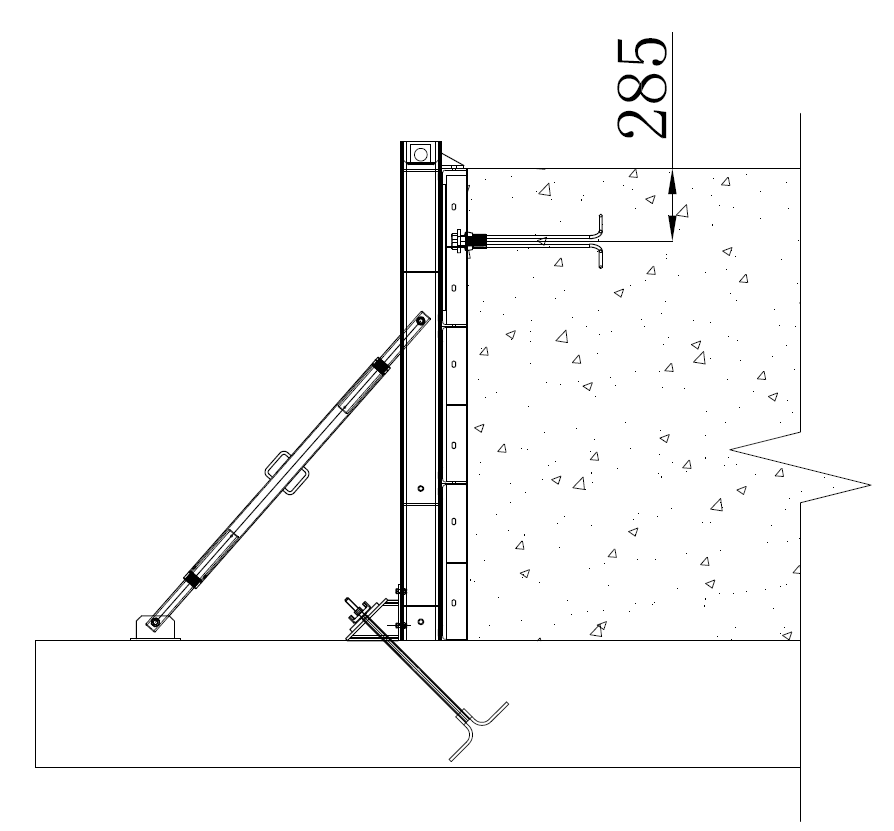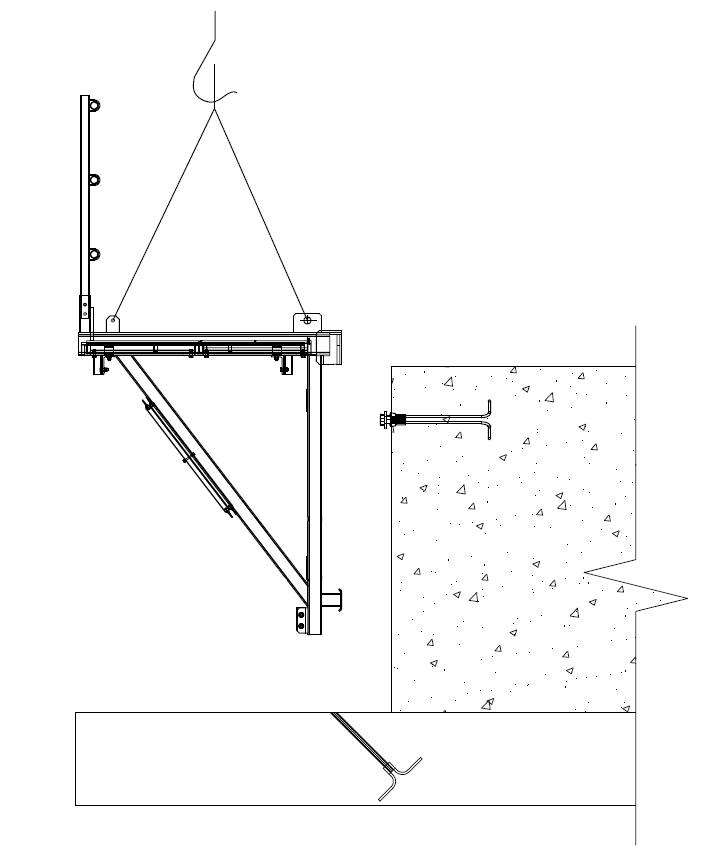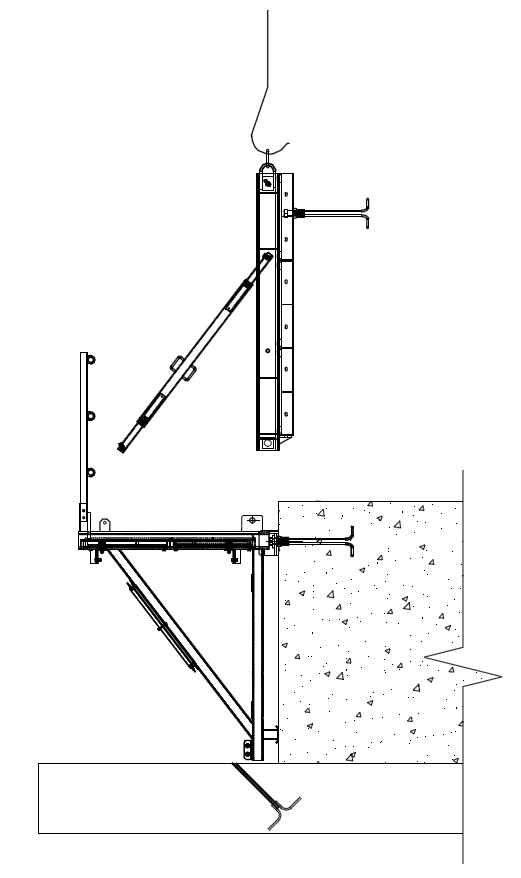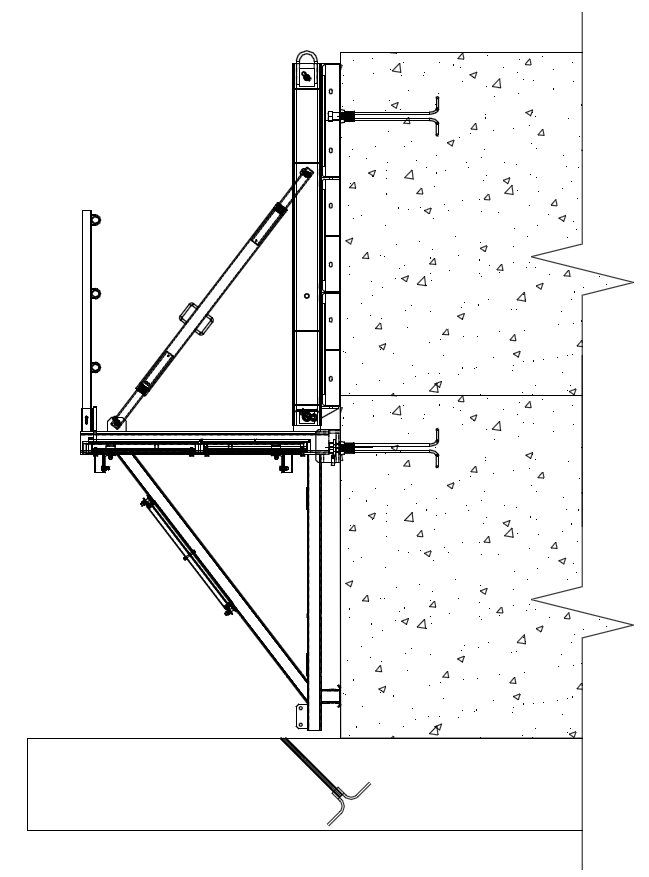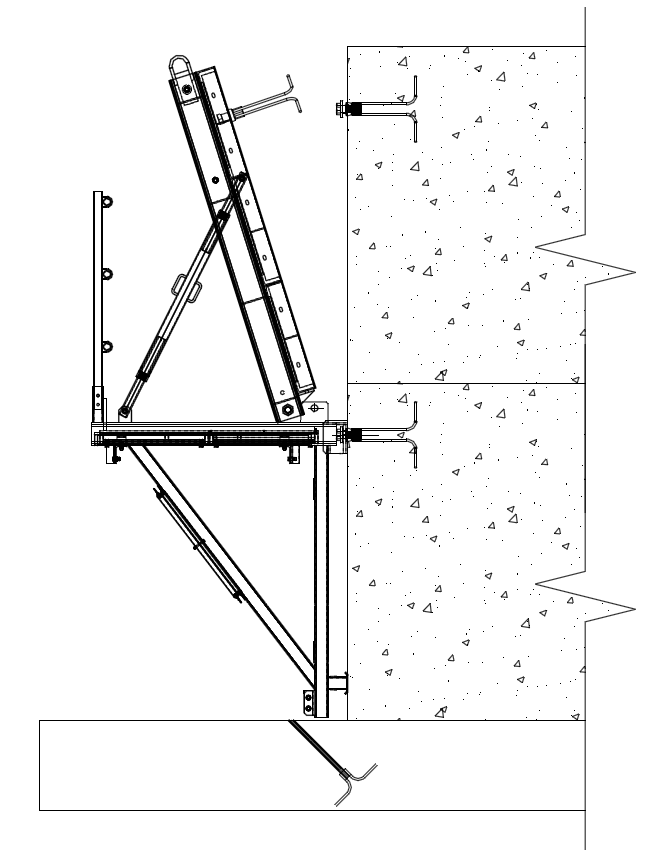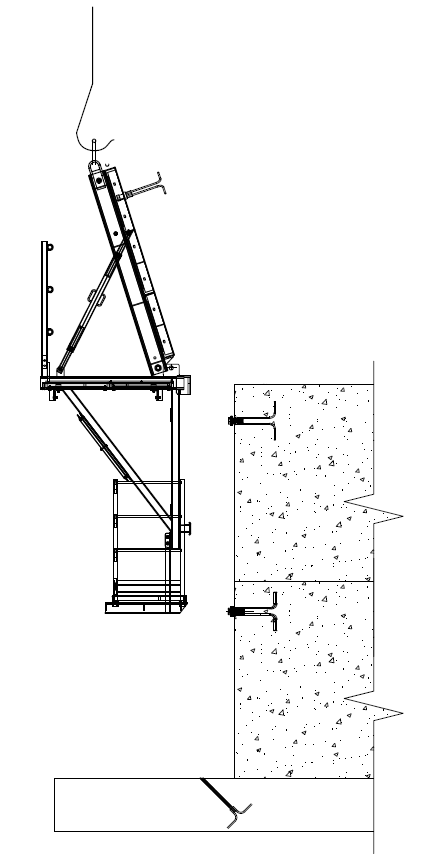KITSEN Hanging Formwork is mainly used for formwork construction of nuclear power projects, dams, bridge piers, anchors, concrete underground retaining walls and underground concrete lining of plant. Because the lateral pressure of the concrete is fully borne by the embedded parts and the brackets, there is no need to pass through the wall screws, and the template does not need additional reinforcement measures. The construction is simple, rapid, and very economical. The concrete surface is smooth and clean, making it an ideal single-sided wall formwork system.
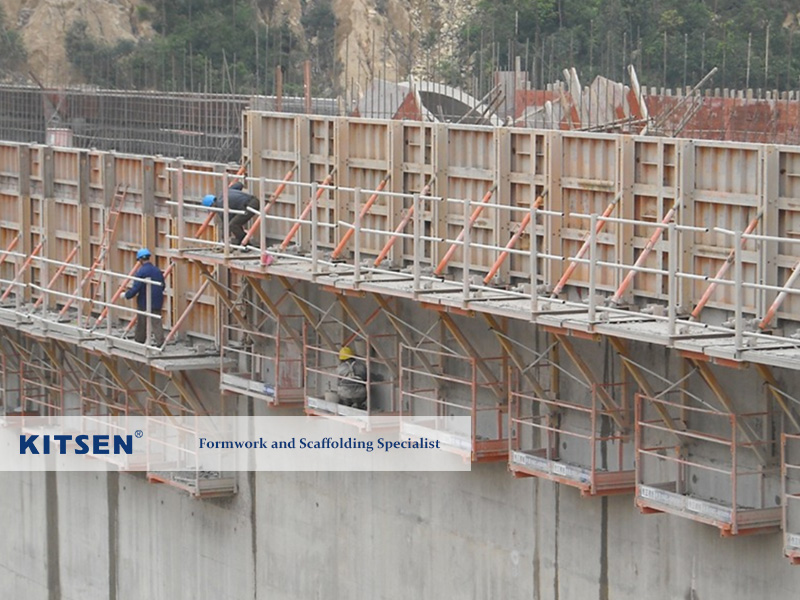
Installation details:
1.First floor construction:
The ground should be pre-buried with 45° tie rods at the specified position to fix the formwork frame. The support base should be fixed with bolts. The top of the formwork should be inclined inward by a certain distance (approximately 8-12mm, according to the actual conditions of the construction site), it will move to the vertical position when pouring concrete. When removing the formwork, first remove the bolts on the embedded parts.
Pay attention to ensure that the distance of embedded parts reach the top of the formwork is 285mm at the installation direction.
2.Platform lifting and installation:
Only when the concrete reaches the design strength (>12MP) can lift the working platform. Before lifting the platform, make sure that the embedded parts and the positioning sleeve are firmly connected with the bolts. When lifting, make sure that the working platform is completely hung on the bolt positioning sleeve then loosen the hook.
3. Formwork lifting and installation:
After the working platform is installed, lifting and installing the formwork frame. Make sure the formwork frame is safely hung on the bolts and the lock pin is inserted then release the hook.
4. Concrete pouring:
Adjust the formwork to the exact position after it installed. The top of the formwork is inclined inward by a certain size according to actual experience to ensure that it will move to a vertical position when pouring concrete.(See Construction Process 1)
5. Formwork stripping:
When the concrete meets the strength requirements, first loosen the fixing bolts on the embedded parts, then adjust the diagonal brace to keep formwork frame tilt backward by a certain angle, finally use the formwork stripping device to slide the formwork back 400mm to make the formwork have enough space to install the positioning sleeve and Embedded parts.
6. Platform lifting:
After the platform leaves the concrete, install the lower hanging guardrail platform. Ensure that the connecting bolts are firmly connected. Only when the concrete reaches the design strength (>12MP) can go down to the hanging guardrail platform. Before lifting the platform, make sure that the embedded parts and the positioning sleeve are firmly connected with the bolts. When lifting, make sure that the working platform is completely hung on the bolt positioning sleeve then loosen the hook.
7. Concrete pouring:
Adjust the formwork to the exact position after it installed. The top of the formwork is inclined inward by a certain size according to actual experience to ensure that it will move to a vertical position when pouring concrete (See Construction Process 1). Concrete can only be poured after removing the positioning sleeves and bolts on the bottom floor.
